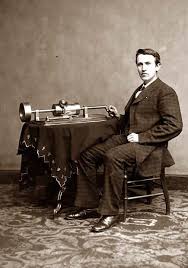Simple Definition
Dyslexia is an inherited condition that makes it extremely difficult to read, write, and spell in your native language despite at least average intelligence.Revised definition from the International Dyslexia Association
Dyslexia is a neurologically-based, often familial, disorder which interferes with the acquisition and processing of language. Varying in degrees of severity, it is manifested by difficulties in receptive and expressive language, including phonological processing, in reading, writing, spelling, handwriting, and sometimes in arithmetic.Research definition used by the National Institutes of Health
Dyslexia is a specific learning disability that is neurological in origin.It is characterized by difficulties with accurate and/or fluent word recognition, and by poor spelling and decoding abilities.
These difficulties typically result from a deficit in the phonological component of language that is often unexpected in relation to other cognitive abilities and the provision of effective classroom instruction.
Secondary consequences may include problems in reading comprehension and reduced reading experience that can impede growth of vocabulary and background knowledge.Cause of Dyslexia
Dyslexia is an inherited condition. Researchers have determined that a gene on the short arm of chromosome #6 is responsible for dyslexia. That gene is dominant, making dyslexia highly heritable. It definitely runs in families. Dyslexia results from a neurological difference; that is, a brain difference. People with dyslexia have a larger right-hemisphere in their brains than those of normal readers. That may be one reason people with dyslexia often have significant strengths in areas controlled by the right-side of the brain, such as artistic, athletic, and mechanical gifts; 3-D visualization ability; musical talent; creative problem solving skills; and intuitive people skills.
Dyslexia results from a neurological difference; that is, a brain difference. People with dyslexia have a larger right-hemisphere in their brains than those of normal readers. That may be one reason people with dyslexia often have significant strengths in areas controlled by the right-side of the brain, such as artistic, athletic, and mechanical gifts; 3-D visualization ability; musical talent; creative problem solving skills; and intuitive people skills.In addition to unique brain architecture, people with dyslexia have unusual "wiring". Neurons are found in unusual places in the brain, and are not as neatly ordered as in non-dyslexic brains.
It is therefore assumed that people with dyslexia are not using the most efficient part of their brain when they read. A different part of their brain has taken over that function.
Reference:
| Bright Solutions for Dyslexia, Inc. |
| 2059 Camden Ave. Suite 186 |
| San Jose, CA 95124 |
email: info@BrightSolutions.US





















































